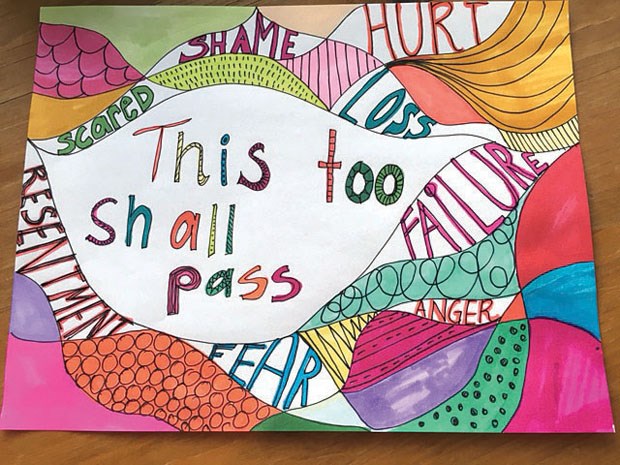Ever heard the saying, "art is good for the soul?" Facing medical issues involves far more than managing physical issues. From stress and anxiety, trauma from abuse or post-traumatic stress disorder, transitional life changes, grieving the loss of a loved one, or coping with a medical diagnosis, making art can have a lasting therapeutic effect both emotionally and physically.
The creative process can help lower stress and anxiety, help us feel more relaxed, be a way to connect with ourselves and others, explore deep emotional issues, overcome negative thoughts, verbalize our fears, resolve emotional conflict, purge guilt, or reconcile restlessness and resentment. Visual art, music, dance, and writing are all vehicles for selfreflection and healing.
Research shows that creative activity has the capacity to not only improve cognitive functions, problem solving abilities, and memory functions, it significantly reduces the use of medications, as well as symptoms of pain, tiredness, depression, lack of appetite, and improves overall wellbeing and quality of life. Furthermore, using art as a form of therapy has proven to be an effective tool to empower patients, help cope with medical, mental and physical challenges, provide respite care to caregivers, and strengthen and rejuvenate the body, mind and spirit.
Whether it is using photography and creative writing to ease treatment for cancer patients, mindfulness-based art therapy or meditative practices to treat chronic pain sufferers, or the use of painting, music, movement and dance with Alzheimer's patients, healing through creativity are just some of the ways art is being used therapeutically. Art also plays a role in the health of a community: murals and sculptures are becoming standard in hospital rooms and care facilities to alleviate fears and anxieties; roadside memorials are increasingly being used to commemorate loved ones; public art installations are a popular way to highlight social justice issues, and add beauty to public spaces, and display community pride.
Self-expression through art is an integral component to living a healthy lifestyle. If you find yourself stressed, or if you are going through a difficult time, choose art as a way to start the process of healing. Carve out a special spot to unwind and relax. Try the beach, your yard, community parks or gardens or even a nook in your house where you can invite creativity.
Read, write, draw, dance, sing, play, to unwind and relax. Don't worry about being "creative enough," or making "good art," but focus on the process itself by choosing a medium that you are comfortable with and that will allow you to express freely. This may look like drawing or colouring, knitting, beading, gardening, using paint or collage as a way of reflecting on your life and future, writing poems or everyday thoughts in a journal, or scrapbooking with photos of loved ones.
At times, the creative process brings with it emotions that are sometimes too overwhelming to deal with on your own. Seek help from a professional: clinical counsellors and art therapists are there to come alongside and support you during your journey. Most of all, the creative process allows for the possibility of healing, grace, forgiveness and compassion, towards others and ourselves to take place. Art cradles the heart.
Meg Neufeld is a cultural anthropologist, practicing mixed-medium artist and program director at Alongside You, a health organization that offers a multi-disciplinary approach to health, and where creative activity is encouraged amongst people of all abilities for overall health and wellness. Mary Ann Burrows is an artist, and the president and founder of Artists in the Village, a non-profit society that focuses on inspiring creativity within each other and the community through connection, expression and awareness.


